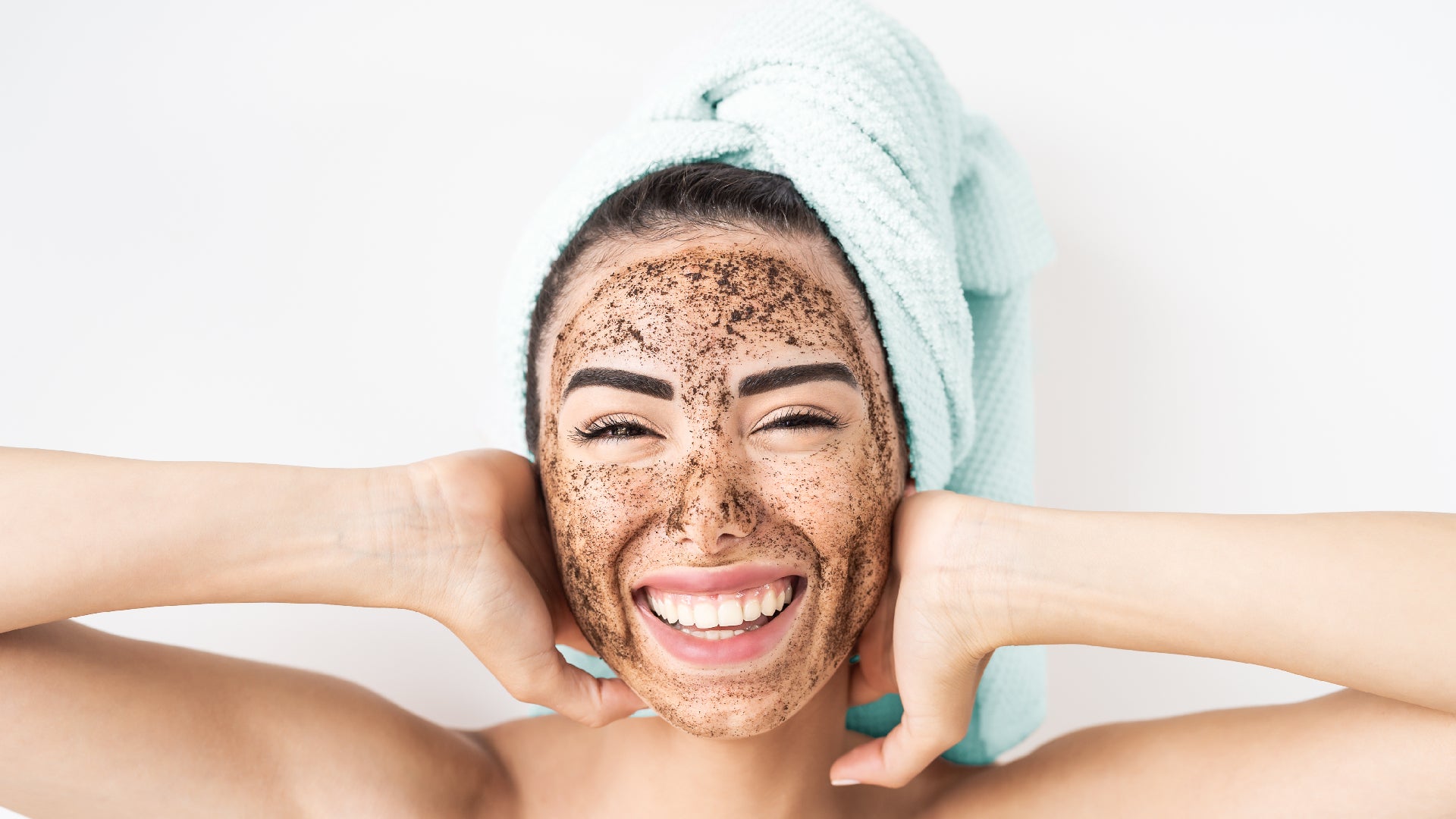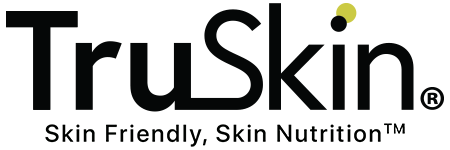
Chemical Vs Physical Exfoliation: Which Is Best?
When something as important as exfoliation comes in two completely different guises, how do you know which is best? Read on for a complete breakdown of the highs and lows of both chemical and physical exfoliation…
Exfoliation is one of the simplest, most effective skincare habits for transforming dull, sad skin into the brightest, healthiest-looking skin of your life. It works hard to smooth out annoyingly bumpy skin texture, reduce the frequency of pesky breakouts, decrease excess oil, and even minimize the appearance of fine lines and wrinkles.
But exfoliation is often plagued by contradictions and it can be hard to navigate the facts. Should you or should you not exfoliate every day? Are scrubs better than exfoliating masks? Or is the opposite correct?
Of course, the truth usually depends on your skin type and its current condition (because, yes these are two very separate things), but one thing’s for sure, exfoliation takes on two very different forms. And it’s important you know what’s what so you can make the right decision about what’s right for you and your skin.
Before we go any further, however, let’s have a quick refresh on the basics. As you know, skin renews itself every day, shedding millions of cells as it produces fresher ones deeper below the surface. This process is called desquamation and it’s a pretty efficient way of keeping your skin fresh, healthy, moisturized and well protected from the slings and arrows of daily life. Like most good things in life, though, this process slows down as you age, allowing dead skin cells to hang around at the surface and encouraging dryness, dehydration, blocked pores and the formation of lines, wrinkles and other visible signs of aging.
The good news is that exfoliation – both physical and chemical – is here to save the day, sloughing off dead skin cells (as well as other nasties like grime, pollution, makeup and excess oil), boosting circulation, accelerating cell turnover and helping to keep your skin’s barrier function ticking along nicely. Technically, both physical and chemical exfoliation do the same thing. But they work in completely different ways.
So first up, let’s take a look at the most ‘classic’ and well-known form of exfoliation: the physical kind.
What Is Physical Exfoliation?
Physical exfoliation is the one you’ll be most used to. Remember those scrubs you made as an enthusiastic teenager that contained all manner of kitchen ingredients like mashed banana, oatmeal and yogurt? Well, thanks to the oatmeal, that’s a physical exfoliant right there.
Physical exfoliants are abrasives and basically include anything that requires some kind of manual force or motion in order to remove dead cells from the surface of your skin. Face scrubs, which contain grainy elements like sand, sugar, salt and fruit seeds, are the most obvious choice, but mitts, loofahs and cleansing brushes also fit into the same camp.
Then there are the professional treatments like microdermabrasion and dermaplaning. If you’re not acquainted with these, microdermabrasion works by combining microcrystals with a vacuum suction to exfoliate dead skin cells and stimulate collagen production. Dermaplaning, meanwhile, employs a tiny razor to gently shave the skin’s surface. This helps remove peach fuzz, but is also helps get rid of the upper-most layer of dead skin cells as an extra bonus.
Is Physical Exfoliation For You?
When used carefully, gently and not too often (two or three times a week is usually the sweet spot), physical exfoliation can be a great addition to any skincare routine.
We find they’re particularly great for:
* Improving poor skin texture
* Oily skin
* Boosting circulation
* A truly deep clean
* Instantly brighter skin
In? Then Try: Our brand new Vitamin C Gentle Face Scrub which we’re super excited about. Abrasive without being too hard on your complexion, this delicious scrub harnesses our favorite type of vitamin C, sodium ascorbyl phosphate, alongside antioxidant-rich yuzu lemon (which is also naturally chock-full of vitamin C) to work on dull, lifeless-looking skin fast.
All this combines with the smoothness of Bora Bora white sand which is no ordinary sand. Ultra-fine, it's extremely gentle on the skin to help promote cell turnover and remove rough, dead skin cells without the irritation often experienced with inferior face scrubs. Add in some soothing, hydrating aloe and all this makes for the ideal twice weekly scrub in a nutshell. Although, fyi, no nutshells were used in the making of this scrub. Nutshells do not have a smooth, uniform shape which makes them notorious for creating micro-tears on the surface of your skin. And we do not want that for you.
What Is Chemical Exfoliation?
Instead of using physical movement to boost cellular turnover, chemical exfoliants use topical ingredients (usually acids) to dissolve and break down the bonds between dead skin cells so they slough away more efficiently. Again, there are skincare products you can use at home, but also professional treatments like chemical peels can offer very powerful results.
Most at-home chemical exfoliants use AHAs, BHAs or PHAs as a means to get the job done.
Alpha hydroxy acids (AHAs) are water-soluble chemical compounds that are usually extracted from fruit or milk sugars. Glycolic acid is probably the most well-known AHA because it has a very low molecular weight which makes it very good at penetrating the skin. Sometimes, too good if your skin errs towards the sensitive side. And this is where lactic acid comes into its own. Lactic acid has a larger molecular size than its glycolic cousin which makes it way gentler and more readily tolerated by sensitive skin.
Unlike their water-soluble AHA cousins, beta hydroxy acids (BHAs) are oil-soluble substances which means they’re able to cut through the lipid layers between your skin cells to penetrate into your pores and exfoliate your skin on a much deeper level. As well as being darn good at exfoliating your skin, BHAs also target and reduce excess sebum to clear and brighten the skin – that’s a big deal for anyone struggling with oily, inflamed or acne-prone skin, btw. Examples of BHAs? Frankly there’s only one worth mentioning, salicylic acid which has been studied for decades and proven to not only target pores and increase cell turnover, but to offer incredible antibacterial and anti-inflammatory benefits.
Last, but not least, you have poly hydroxy acids (PHAs). Much newer to the exfoliation scene, PHAs are a new generation of water-soluble AHAs with all the benefits… but with less of the side-effects. The reason for their gentle nature is that they’re formulated with multiple strands, so they have a larger molecular size and are therefore unable to penetrate the deeper layers of your skin. Instead, they work exclusively on the skin’s surface to boost cell renewal without irritating your complexion. They’re basically your go-to if you have super-sensitive skin but are concerned about the visible signs of aging. Main players include gluconolactone (sometimes referred to as gluconic acid) and lactobionic acid which is an oxidized form of lactose and extracted from cow’s milk.
Is Chemical Exfoliation For You?
Just like their abrasive co-workers, chemical exfoliants work for all skin types as long as you patch test them first and use them as often (or as little!) as your skin allows.
They’re specifically good for…
* Sensitive skin
* Targeting dark spots
* Acne-prone skin
* Fine lines and wrinkles
* Enlarged pores
In? Then Try: 6% AHA, BHA + PCA Liquid Exfoliant which, as the name suggests, combines all three chemical exfoliants (and vitamin C, of course!) to gently but powerfully boost cell regeneration and promote brighter, younger-looking skin. Simply apply it to cleansed skin before your serum and moisturizer for a daily glow-getting fix and watch your skin continue to get better and better.










